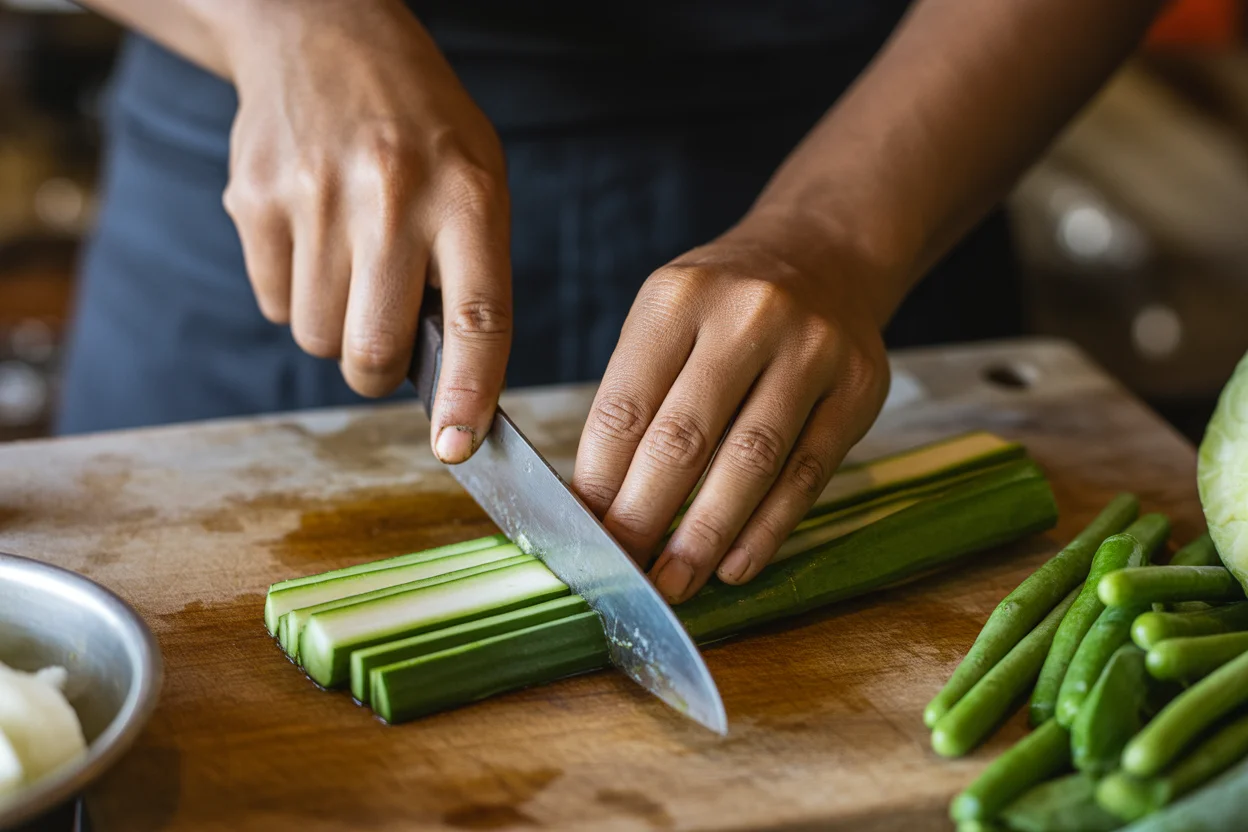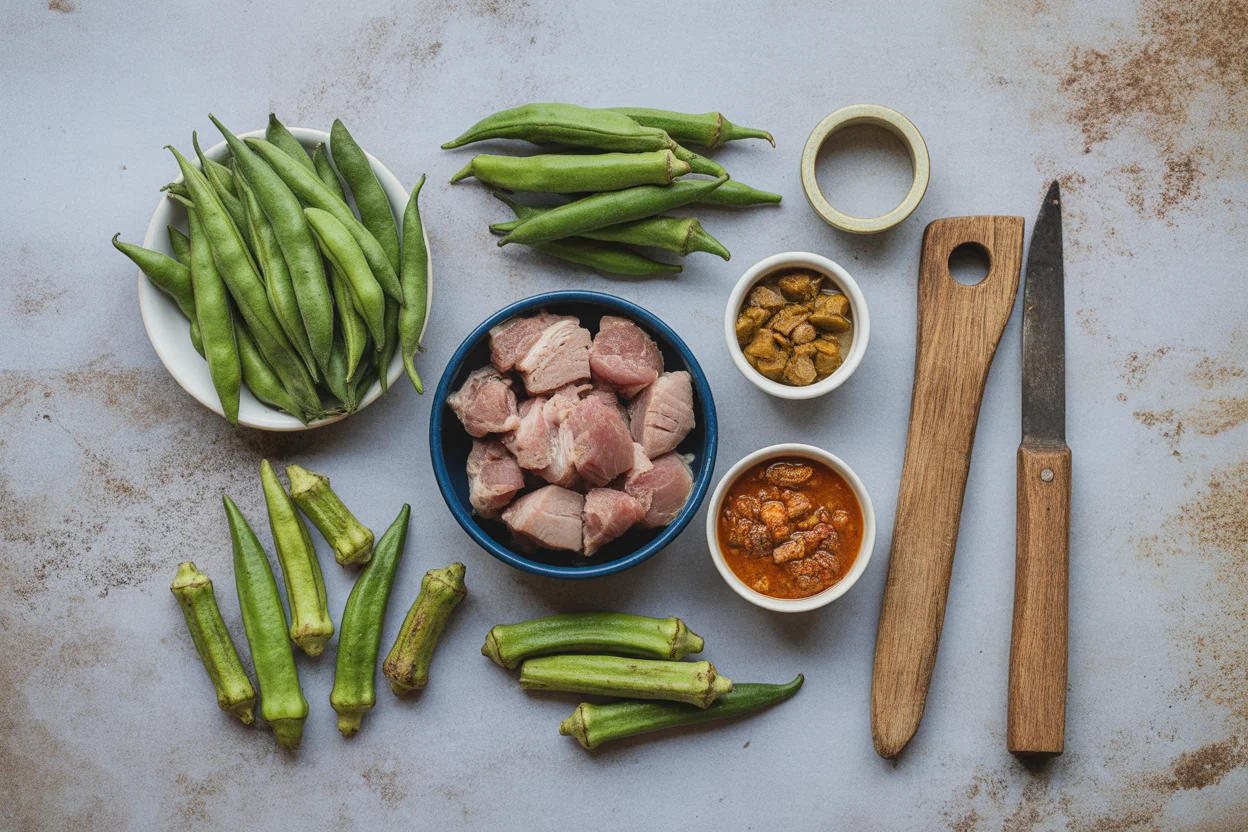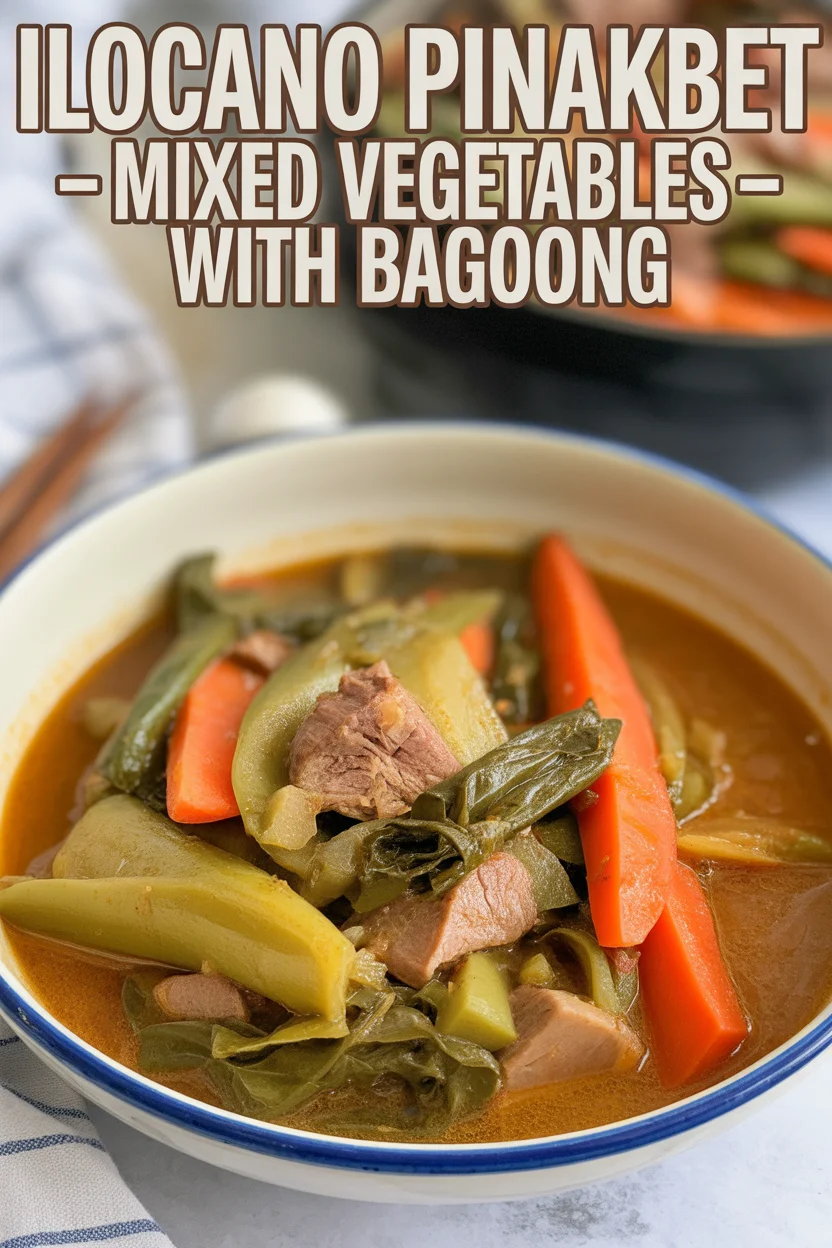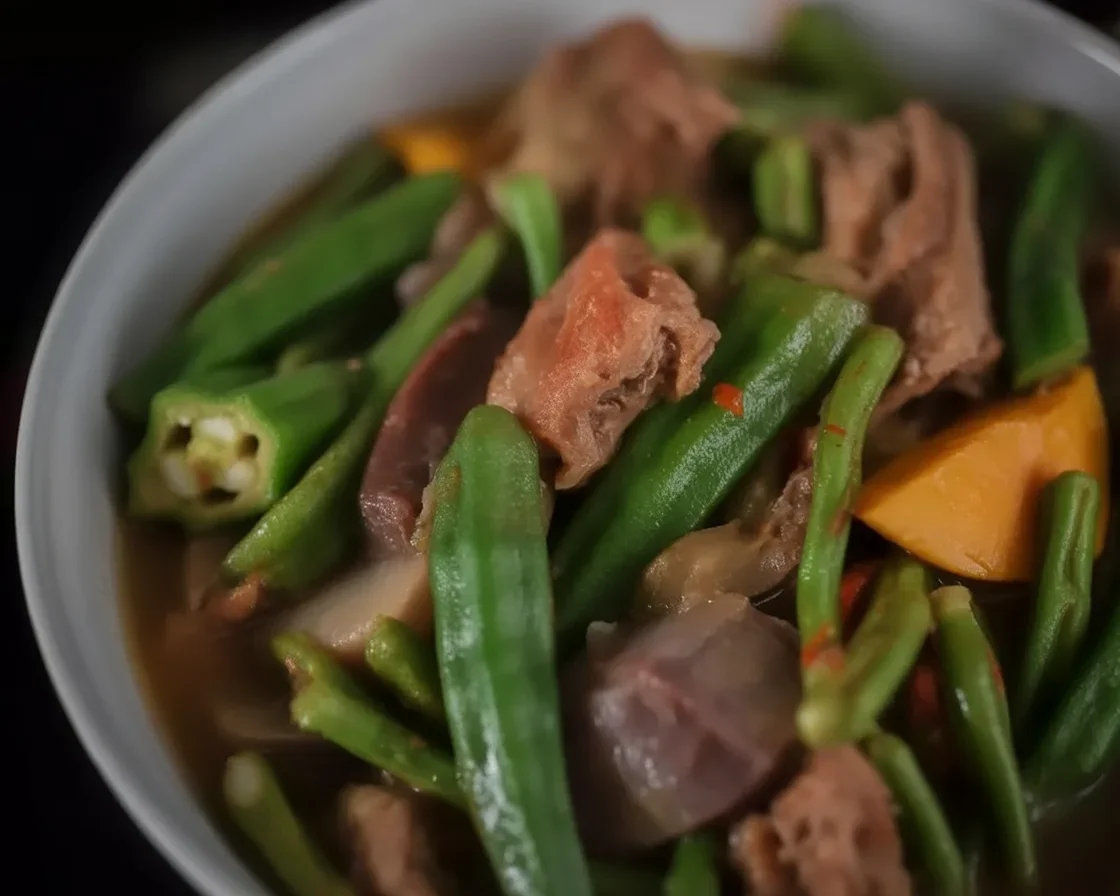Filipino pinakbet Ilocano is seriously the answer for anyone craving a veggie packed meal that’s pure Filipino comfort food. Ever search your fridge and just see a bunch of random veggies staring at you, making you wish you knew what to do with them? I’ve been there too many times. Pinakbet throws all those veggies together in one pot, and that salty punch of bagoong ties the flavors up like a pretty little bow. If you like exploring Filipino classics, you’ll probably enjoy some kid-friendly Filipino recipes or maybe that authentic Ilocano pinapaitan (be warned—that one’s got a real kick). Anyway, let’s focus our rumbling stomachs because this hearty, rustic dish is as soul-soothing as a five-star restaurant meal but way easier to cook at home. 
Introduction to pinakbet
You know, pinakbet really means different things depending on where you are in the Philippines. But one thing’s certain—Ilocano pinakbet is bold, simple, and absolutely a classic. This dish is not supposed to be fancy. It’s about comfort, making do with what you have, and stretching your groceries so nothing goes to waste. Honestly, I feel like pinakbet brings families to the table, no matter how busy life gets. You just need a bunch of local veggies, some bagoong (that funky, salty fermented fish sauce—don’t knock it until you try it), and a big pot. That’s it. The flavors are kind of strong at first, like an explosion of the earth on your tongue, but then you just want more.
If you’ve never eaten Filipino pinakbet Ilocano before, you might be thinking… do vegetables really taste that good? Oh, buddy, just wait. My kids actually ask for seconds. Only a good dish can do that, right?

Choosing vegetables
It took me a while—years, actually—to realize that there are no strict rules about which veggies to use in pinakbet. Traditionally, you’ll see okra, bitter melon (ampalaya), eggplant, squash, string beans, and sometimes tomato. If you’ve got those, great. If not? Nobody’s going to yell at you.
I usually grab whatever’s freshest at the market or whatever’s about to go sad in my crisper drawer. Got some leftover long beans? Toss ‘em in. That almost-wrinkly eggplant? Perfect. The heart of this dish is really about mixing textures and flavors. And, let’s be honest, sometimes we just need a creative way to use up those random veggies before they wrinkle beyond return.
My Lola’s version always had extra bitter melon, and I’ll admit, it took me years to appreciate it. Now, I kinda crave that grown-up bitter flavor once in a while. Anyway, experiment, swap, freestyle. Pinakbet is forgiving like that.

Preparing bagoong
Now let’s talk about bagoong. It’s the soul of Filipino pinakbet Ilocano, no joke. Some folks use shrimp paste, but the true-blue Ilocos kind uses bagoong isda (fermented fish sauce—not to be confused with patis, okay?). You can buy this funky stuff in bottles at most Asian stores. Yes, it’s strong-smelling. But oh man, it makes vegetables taste, well, almost meaty.
Here’s my tip: warm up a couple spoons in a bit of oil before adding it to the veggies. Don’t just dump it in cold. (Learned that the hard way. Fishy bomb in the kitchen.) This step kind of wakes up the flavors and makes your whole house smell like home, or at least, Ilocano home. And for the love of all things tasty, don’t overdo it your first time. Add a little, taste, then add more if your heart says so.
My dad, funnily, always knew when pinakbet was on the stove—he’d sniff and yell, “Ayan, pinakbet!” Someday, you’ll recognize that smell too.
Cooking vegetables
Here’s where the magic happens, but honestly, don’t overthink it. Making Filipino pinakbet Ilocano is more about layering than timing perfection. Start by sautéing your onions, maybe garlic if you want, then pile in your hearty veggies first—like squash and bitter melon. Give them a head start, you know? Softer ones, like eggplant and okra, go near the end.
Don’t drown the whole thing in water. Pinakbet isn’t a soup, but you do want things kinda juicy. Sometimes tomatoes melt down and make their own saucy goodness. Keep heat medium. Stir here and there, but not too much or things fall apart into mush.
Let the smells guide you. If it smells sweet, grassy, and a bit salty—you’re doing something right. The vegetables should hang onto their shape, but go tender enough you don’t need a knife.
I never liked vegetables, but when I learned to make pinakbet the way my mom did, I actually looked forward to eating it for lunch. Now my own kids love it too!
Seasoning
Alright, here’s where you sprinkle that magic—not actual magic, just your taste buds. Some cooks just throw in extra bagoong, but I like a pinch of pepper and a squeeze of calamansi or lemon right before serving. It lifts all the flavors up. Sometimes, if the tomatoes were a bit sad, I add a touch of sugar to balance things. Salt? Go easy, since bagoong is salty beyond belief. My stubborn neighbor insists on adding a bit of fried pork for extra flavor, and while I’m not against pork, true Filipino pinakbet Ilocano really leans veggie. It’s your call.
Every family does it different, so play around until it tastes like home to you.

Serving with rice
Okay, so after all that chopping, sautéing, and worrying if you overcooked the ampalaya, there’s just one way to eat Filipino pinakbet Ilocano: with a mountain of rice. I mean, honestly, is there anything better? The fluffy rice soaks up all that salty, slightly bitter, umami-rich sauce and it fills you up like a warm hug.
Here’s how I make it extra:
- Always serve it hot, right off the stove.
- Sometimes I top it with a quick fried fish for crunch.
- Leftovers? Pinakbet gets tastier the next day—just zap it quick and you’re golden.
- If you’re feeling wild, scoop it onto fried garlic rice for extra wow.
Seriously, a big bowl of this and maybe a small plate of fried pork and you’re living large. If you want more healthy meal ideas, you can check out healthy Filipino recipes too.
Cultural importance
You know what’s crazy? Filipino pinakbet Ilocano isn’t just food—it’s history on a plate. It tells the story of how Ilocano folks made the most out of tough, dry land and used what the earth gave them. Bagoong was a way to keep fish fresh, and the veggies were what the garden offered that season (talk about sustainable cooking).
My biggest shock visiting Ilocos was seeing whole families eating together, laughing, teasing, and everyone grabbing for the biggest hunk of squash. Pinakbet is about sharing. About making something humble into something absolutely irresistible. Maybe it isn’t fancy, but it’s real. It’s home.
If you’re still hungry for more authentic Pinoy cooking, try classic dishes like bistek Tagalog or that iconic Pinoy beef tapa for your next feast.
So, yeah, Filipino pinakbet Ilocano is honestly my not-so-secret weapon when I want real comfort food without fuss. If you want to dig into other versions, check out this Pinakbet Tagalog Recipe for a slightly different twist. You can even dive deeper with this guide to Pinakbet (Filipino Vegetable Stew) for extra tips, or chat with other food lovers in this lively Filipino cuisine: traditional pinakbet Ilocano recipe group. If you’ve never made this before, take a risk. You might just make a veggie lover out of yourself, too.
Pinakbet
Ingredients
Vegetables
- 1 cup Okra Fresh
- 1 cup Bitter melon (ampalaya) Slice thinly
- 1 cup Eggplant Cut into cubes
- 1 cup Squash Cut into cubes
- 1 cup String beans Trimmed and cut into 2-inch pieces
- 1 medium Tomato Quartered
- 1 medium Onion Sliced
- 2 cloves Garlic Minced (optional)
For the sauce
- 3 tablespoons Bagoong (fermented fish sauce) Use bagoong isda for authentic flavor
- 1 teaspoon Calamansi or lemon juice To taste
- 1 pinch Pepper To taste
- 1 teaspoon Sugar If needed to balance acidity
Instructions
Preparation
- Slice and chop all vegetables and set aside.
- Warm up the bagoong in a bit of oil to enhance flavors.
Cooking
- In a large pot, sauté the onion and garlic until fragrant.
- Add the harder vegetables like squash and bitter melon first and cook for a few minutes.
- Next, add the okra and eggplant, followed by the string beans and tomato.
- Add about a cup of water to keep the vegetables juicy but not soupy.
- Season with bagoong, pepper, and a little calamansi or lemon juice.
- Cook until vegetables are tender but still hold their shape.
Serving
- Serve hot with steamed rice and enjoy!
- Optionally top with fried fish for added crunch.

